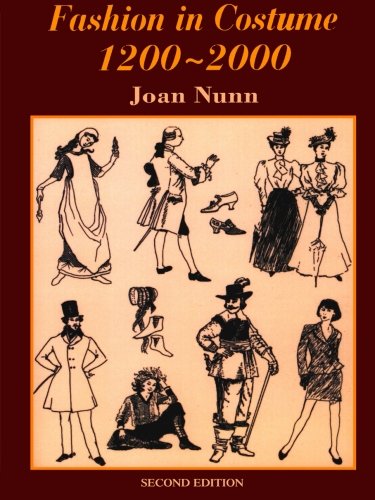By Mary-Katherine Whelan, Intern
Mary-Katherine has been interning at the Huron County Museum & Historic Gaol since May and is currently enrolled in the Museum Management and Curatorship program at Fleming College. A graduate from the Arts Management Program at the University of Toronto, she has previously worked for the National Historic Sites Alliance of Ontario, the Stratford Festival of Canada, the Niagara Historical Society, and Great North Artist Management. In part one of this two-part series, she details some of her favorite books and blogs for researching the history of fashion.
My love of historical fashion …
Fashions from the past can tell us a lot about the people that made the clothes, purchased them, and wore them. I’ve long been fascinated by historical fashions and over the years have researched and read copious amounts of books on the topic.
As an emerging museum professional I’ve found that my knowledge of historical fashions and dress have increased my ability to successfully date photographs and artifacts. During my schooling I had the privilege of working with a variety of artifacts like Victorian wedding gowns, glass buttons, purses, uniforms and some of the tools used to create clothing. I often fell back on several go-to books and websites to help pinpoint a time period when accession forms lack a discernable time period.
Book Resources
One of my first exposures to historical fashions were from Tom Tierney fashion plate colouring books and paper dolls. The more historically-oriented selections are drawings based on fashion plates from the Victorian era. As I grew older I started to seek out the sources that Tierney used as well as other books on the evolution and history of historic costumes and clothing. Some of my favourite publications are Tierney’s Empire Fashions Colouring Book, and Medieval Fashions Colouring Book. If you are interested in checking out some of Tom Tierney’s other publications, visit the Dover publications website.
Another book that I rely on is Joan Nunn’s Fashion in Costume 1200-2000, Revised, which chronologically details types of clothing styles while providing cultural and historical context with accompanying drawings. The book is easy to understand and doesn’t lose the reader with overly technical terminology. While not an exhaustive record, the book gives a good overview and serves as a great introduction.
Additionally, What People Wore When – A Complete Illustrated History of Costume from Ancient Times to the Nineteenth Century for Every Level of Society by Melissa Leventon is an amazing visual resource. Using classic 19th century illustrations by Auguste Racinet and Friedrich Hottenroth the book presents these illustrations chronologically while providing in depth contextual information, glossary of terms and a detailed bibliography to help better illustrate why people wore what they did and how certain styles have impacted fashion today.
Blogs
While not museum collections, these blogs are worth checking out! They feature examples of vintage or recreated historical fashions and are a good place for discovery, research, or inspiration.
The American Duchess
A blogger who designs and fabricates her own historical clothing
OMG That Dress
A tumblr blog devoted to sharing photographs of men and women’s fashions, plus jewelry and accessories
The Hidden Wardrobe
A blogger who works at Berrington Hall showcases and explores 18th century and 19th century costumes from the National Trust Collection
Worn Through
A blogger whose approach is more academic in scope and aims to spark discussion about current trends and topics


